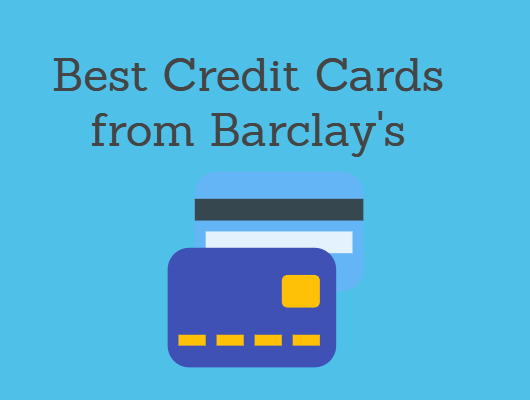You’ve probably received countless pieces of junk mail from credit card issuers. Many might include a special balance transfer offer – often with a low introductory APR, or even an initial 0% APR offer. But what is a balance transfer, anyways? How do balance transfers work?

What is a Credit Card Balance Transfer?
Simply put, a balance transfer is when you transfer debt from one credit card to another.
It might make sense to do in some cases, particularly when the debt is on a very high-interest credit card.
For example, you might have $5,000 in credit card debt on a Citi credit card with a 24% APR. By transferring that debt to a credit card with a lower interest rate, you could save a significant amount on interest payments – and pay off your debt quicker!
Additionally, many credit cards offer low initial APRs, often of 0% for a certain timeframe (usually 6-20 months). So, in some cases, you could avoid interest altogether for a period of time, by doing a balance transfer.
How Do Balance Transfers Work?
When you do a balance transfer, here is the basic process:
- Select and apply for a balance transfer card, ideally with a 0% intro APR and reasonable balance transfer fees
- The card will usually come with checks, and/or online payment options
- You can use these checks to send payments to existing credit card issuers. You can also make payments over the phone, online, or via direct deposit
- This will essentially pay off the existing debt, and create new debt (in the same amount) with the new credit card issuer
- You will be charged a balance transfer fee (usually 3%), based on the amount you transfer. For instance, if you transfer $10,000 in debt, you’d be charged a $300 fee immediately.
While most people transfer credit card debt, you can really transfer any type of debt. The issuing bank of your balance transfer credit card is giving you blank checks – which can be used to issue payments to anyone. So, you could theoretically pay off any sort of loan, or even cut yourself a check to free up some cashflow (NOT recommended, unless you are very responsible and have a clear plan).
Keep in mind that different banks have different rules. Some will allow you to cut a check to yourself or transfer funds to your bank account – but others will consider this a cash advance, which comes with huge fees. Be sure to carefully read the terms of your balance transfer credit card.
When Does It Make Sense to Transfer a Balance?
Basically, there are two reasons one might wish to transfer balances:
- To save money on interest, or
- To consolidate debt and simplify payments
Either of these reasons could be valid – but it’s important to do the math, and be aware of all the specific terms of the offer.
To save money on interest – do the math to compare what you are currently paying with the APR you will be paying on the new card. Consider the balance transfer fee (usually 3%), and the normal APR after the introductory period. This balance transfer calculator can help.
To consolidate debt – again, do the math to see if it makes sense. If you have a car loan at 4% interest, it doesn’t make sense to transfer that to a credit card at 20% interest. Even if it’s a 0% intro APR, you have to factor in the 3% upfront balance transfer fee. In this example, you could theoretically save 1% on interest over the car loan during the intro APR period, but you’d likely pay far more after the introductory offer expires.
Warnings & Precautions
Balance transfers can save you some money in the long run, IF they are handled properly. However, there are some important things to be aware of:
Loss of Grace Periods – normally, when you make a purchase on a credit card, you have 30+ days to pay off the charge before interest starts accruing. However, if you balance transfer to a credit card, this grace period often disappears for new purchases.
For example, if you transfer existing debt from card A to card B, and then start using card B for everyday purchases, you might find that you’re immediately charged interest on those new purchases. Worse yet, some banks will apply your payments to the lowest-APR portion, so if you make a payment to pay off the new purchases, you might find that the payment is applied to your balance transfer debt – and the new purchases will continue to accrue interest.
Cash Advance Fees – Some banks allow you to transfer funds from your new balance transfer credit card directly to your own bank account, in order to pay off other debts or just get a boost of cash. However, some banks count these transactions as cash advances, which start accruing interest immediately, and likely won’t be subject to the promotional APR. If you’re considering a balance transfer, be sure to read the specific terms of the offer and/or ask a bank representative about how balance transfers work at that specific bank.
Missed Payment Fees – If you miss a payment, you will be charged late fees. If your account becomes 60 days late, you will likely be charged a penalty interest rate, that could be 30% or more. If you plan to transfer a balance, you should setup auto-pay and never miss a payment.
Bottom Line
Overall, balance transfers can be useful – but you need to be careful. You must understand fully how balance transfers work, and the terms of the specific offer you are taking. If you have questions, don’t hesitate to ask the bank who is offering you the card.
Be sure to do the math to determine whether a balance transfer is worthwhile. This balance transfer calculator from CalcXML is very useful.
Lastly, once you have transferred a balance, be sure to stay on top of it. Setup auto-pay, and be sure to never miss a payment. If you can, use the money you’re saving on interest to make extra payments on the principle of your debt, to pay it off faster.


